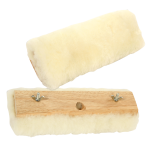When it comes to ensuring clean, safe, and great-tasting drinking water at home, many homeowners turn to reverse osmosis filtration systems. Reverse osmosis (RO) systems are widely regarded as one of the most effective methods for water purification, offering superior filtration and a wide range of health benefits. However, like any home improvement system, the best reverse osmosis system can come with a variety of costs that depend on several factors.
In this blog, we’ll break down the cost of a residential reverse osmosis system, what factors contribute to the price, and how to choose the right system for your needs in Gilbert, AZ. Whether you’re considering upgrading your water filtration system or installing one for the first time, understanding the cost structure will help you make an informed decision.
What is a Reverse Osmosis System?
Before diving into the costs, let’s quickly review what a reverse osmosis filtration system does. Reverse osmosis systems are designed to remove contaminants from water by pushing it through a semi-permeable membrane. This process helps filter out harmful substances such as chlorine, lead, fluoride, heavy metals, nitrates, and bacteria. The result is clean, pure water that is free of unwanted chemicals and minerals.
A residential reverse osmosis system typically includes multiple stages of filtration:
- Pre-filters: These remove larger particles and chemicals such as chlorine.
- Reverse Osmosis Membrane: The core of the system, this membrane removes the majority of contaminants.
- Post-filters: These remove any remaining contaminants and improve the taste and odor of the water.
The cost of an RO system can vary depending on the type, size, and features included, but it generally provides long-term value by ensuring high-quality drinking water.
Factors Affecting the Cost of a Reverse Osmosis System
The cost of a reverse osmosis filtration system depends on several factors, including the system’s quality, features, installation, and ongoing maintenance. Here are the key elements that will influence the price of your system:
1. Type of System
There are several types of reverse osmosis systems available, ranging from basic models to advanced systems with added features. The most common types are:
- Under-sink Reverse Osmosis Systems: These systems are installed beneath your kitchen sink and provide purified water through a dedicated faucet. They are compact, affordable, and ideal for households that primarily need filtered drinking water.
- Whole-House Reverse Osmosis Systems: These systems filter all the water coming into your home, providing clean water for every tap and appliance. They are more expensive due to their larger size and the increased filtration capacity.
- Point-of-Entry Systems: These systems filter water at the point it enters your home, and they can be used for both drinking water and other water needs like bathing or cooking.
In general, under-sink RO systems are more affordable than whole-house systems because of their smaller size and simpler installation.
2. Size and Capacity
The size and capacity of the best reverse osmosis system for your home will significantly affect the price. If you have a larger family or higher water usage needs, you may require a system with a larger tank or a faster filtration rate. Larger systems tend to be more expensive due to the increased filtration capacity and the need for additional components.
For smaller households or those who only need filtered drinking water, a more compact under-sink model may be sufficient and more affordable.
3. Additional Features
Some reverse osmosis filtration systems come with added features that can increase the cost, including:
- Advanced filtration stages: Some RO systems include additional filters, such as UV filters or remineralization filters, that can improve water quality even further.
- Faster filtration rates: High-end systems that filter water faster may cost more due to the advanced technology used.
- Automatic shut-off valves: These valves prevent waste water from being continuously filtered and saved when the tank is full, improving the system’s efficiency.
The more advanced features you add, the higher the overall cost of the system.
4. Installation Costs
In addition to the cost of the reverse osmosis system itself, you’ll need to factor in installation costs. Professional installation is recommended, especially for whole-house systems or systems that require specialized plumbing.
Installation costs can vary depending on the complexity of the setup, with under-sink systems typically being less expensive to install than whole-house systems. On average, you can expect installation to range from $150 to $500, depending on the system type and location.
For a reliable and licensed plumber to handle your installation, visit Cure All Plumbing.
5. Ongoing Maintenance and Filter Replacement
To maintain the effectiveness of your residential reverse osmosis system, you’ll need to replace the filters periodically. The frequency of filter replacement depends on the quality of your water and how much water you use, but typically, pre-filters should be replaced every 6–12 months, while the RO membrane may last 2-3 years.
The cost of replacement filters varies, but you can expect to pay anywhere from $50 to $200 annually for filter replacements, depending on the system you have. Maintenance costs are an important consideration when calculating the total cost of ownership for an RO system.
Cost Breakdown of Reverse Osmosis Systems
Here’s a general breakdown of the costs for reverse osmosis filtration systems:
- Under-Sink RO System: Typically ranges from $150 to $600 for the system itself. Installation may cost an additional $150 to $300, depending on the complexity.
- Whole-House RO System: These systems can range from $1,000 to $4,000 or more, with installation costs ranging from $500 to $1,500.
- Additional Features: High-end systems with advanced filtration and fast flow rates can add anywhere from $200 to $500 or more to the initial cost.
Overall, a reverse osmosis filtration system is a significant investment but offers long-term benefits in terms of water quality, health, and savings on bottled water.
Choosing the Best Reverse Osmosis System for Your Home
A reverse osmosis system is an excellent investment for homeowners in Gilbert, AZ who want clean, safe, and great-tasting water. By understanding the factors that influence the cost of an RO system, you can choose the best system for your needs and budget. Whether you opt for an under-sink system or a whole-house solution, a reverse osmosis filtration system can significantly improve the quality of your water and provide long-term benefits.
For more information about residential reverse osmosis systems, or to schedule installation with a reliable and licensed plumber, visit Cure All Plumbing today.







